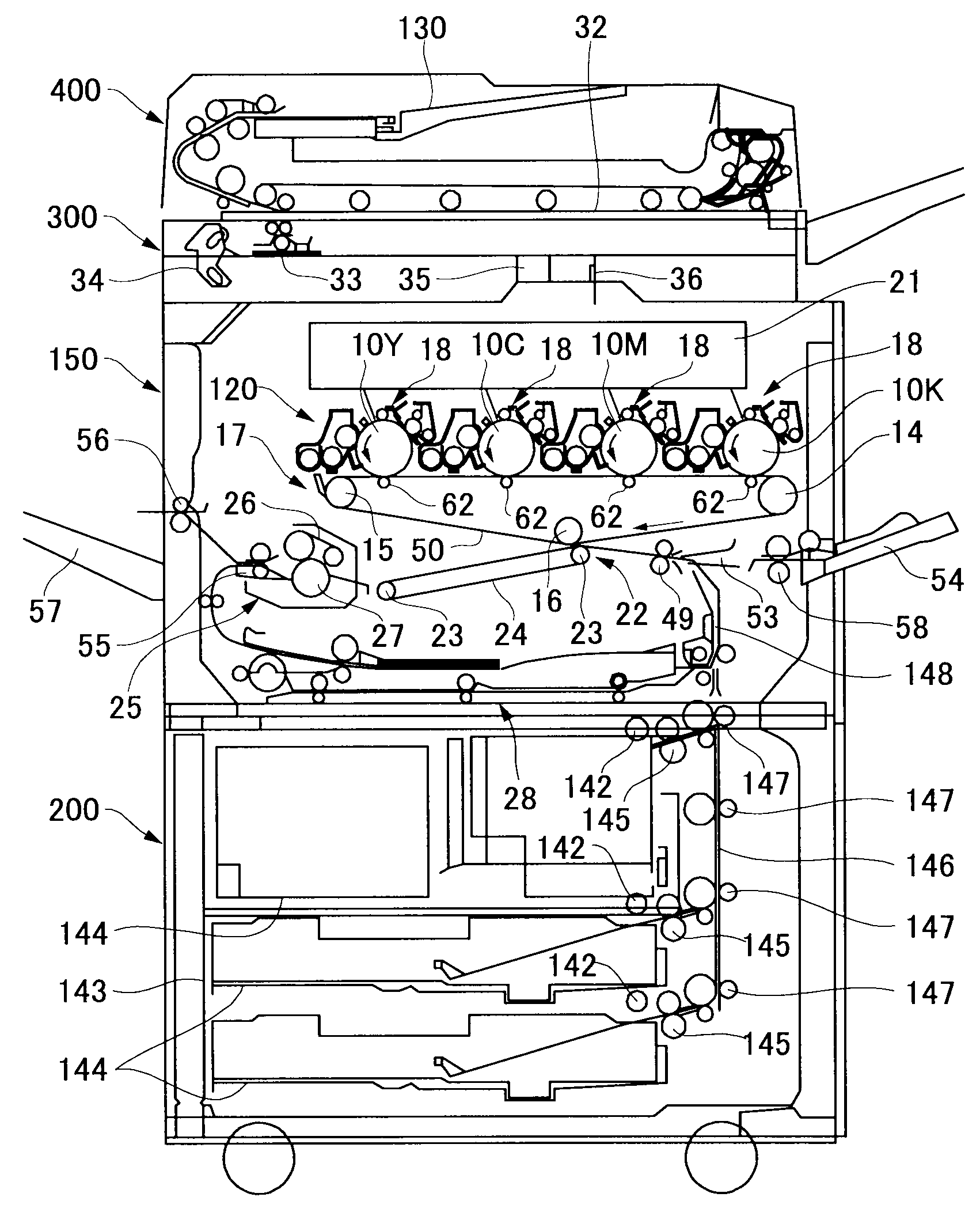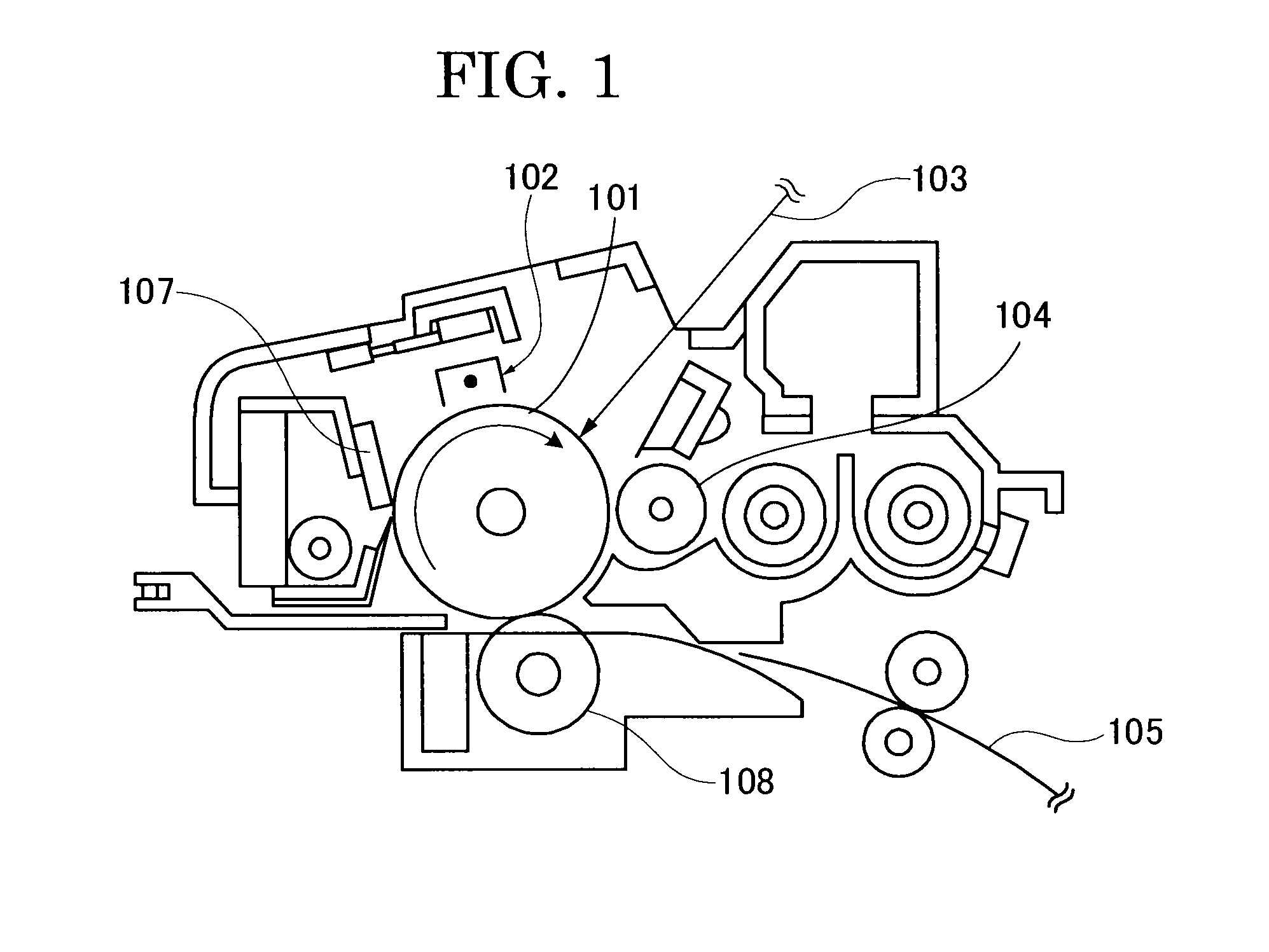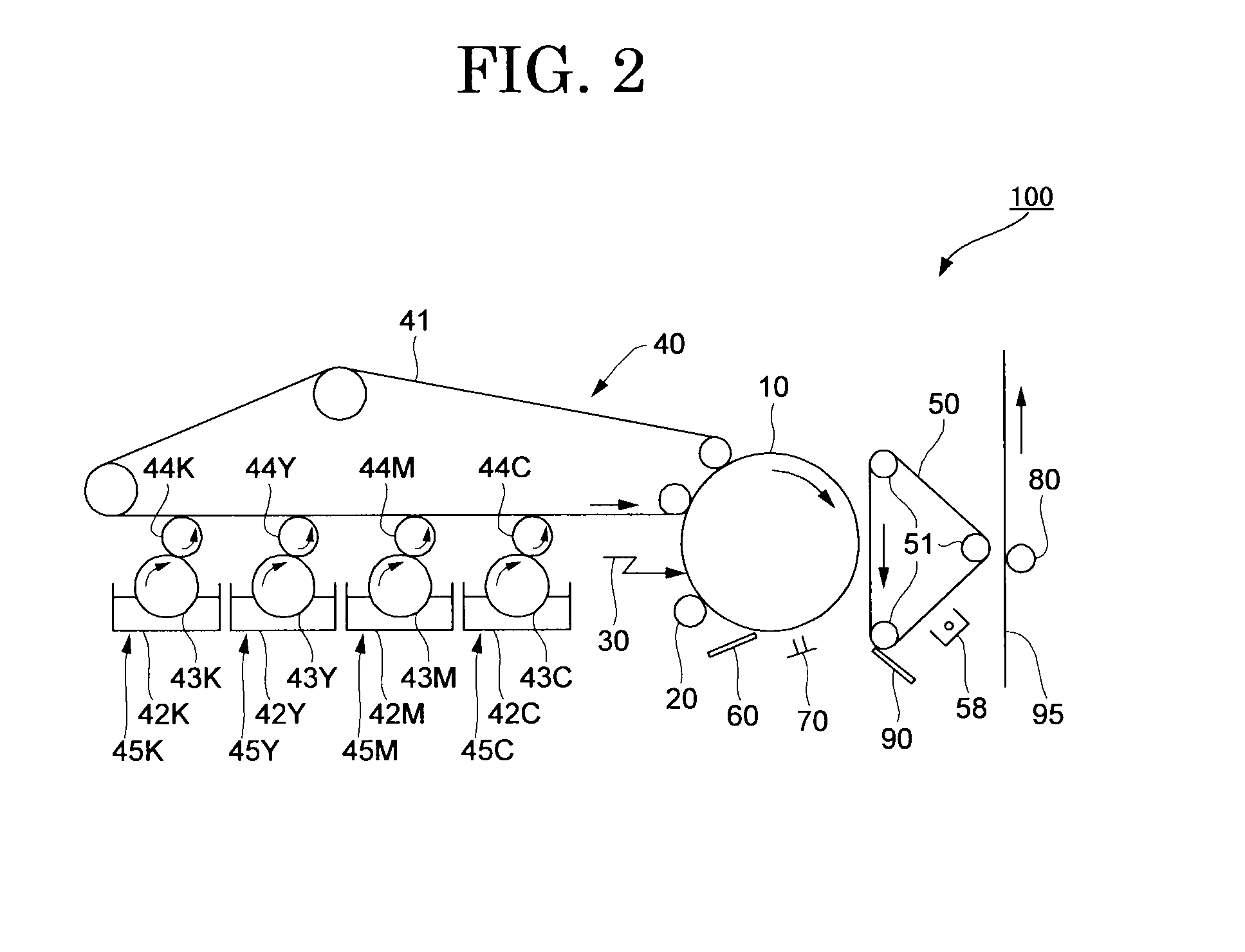Toner, developer, and image forming method
a technology of toner and developer, applied in the field of toner, developer, image forming method, can solve the problems of difficult to reduce the adhesion amount of toner in the electrographic industry, unsolved environmental problems, and high cost of simple body of pigments, so as to reduce the consumption rate of toner and achieve the effect of reducing the consumption rate, reducing the amount of toner, and sufficient image density
- Summary
- Abstract
- Description
- Claims
- Application Information
AI Technical Summary
Benefits of technology
Problems solved by technology
Method used
Image
Examples
example 1
—Preparation of Fine Particle Dispersion 1—
[0289]In a reaction vessel equipped with a stirrer and a thermometer, placed were 683 parts by mass of water, 11 parts by mass of a sodium salt of ethylene oxide methacrylate adduct sulfuric ester (“ELEMINOL RS-30 manufactured by Sanyo Chemical Industries, Ltd.), 83 parts by mass of styrene, 83 parts by mass of methacrylic acid, 110 parts by mass of butyl acrylate, and 1 part by mass of ammonium persulfate, and the mixture was stirred at 400 rpm (rotations per minute) for 15 minutes to yield a white emulsion. The emulsion was heated and the temperature was raised up to a system temperature of 75° C., and allowed to react for five hours. Next, 30 parts by mass of 1% by mass ammonium persulfate aqueous solution was added. The mixture was aged for five hours at 75° C. and an aqueous dispersion of a vinyl resin (a copolymer of styrene-methacrylic acid-butyl acrylate-sodium salt of ethylene oxide methacrylate adduct sulfuric ester) [fine particl...
example 2
[0307]Toner 2 was prepared in the same manner as in Example 1 except that the procedure for preparing the master batch was changed to the following.
—Preparation of Master Batch—
[0308]A mixture of 1,200 parts by mass of water, 405 parts by mass of C. I. PR269 (1022M, manufactured by DIC Corporation) as a colorant, 81 parts by mass of a polyurethane pigment dispersant (EFKA4080, manufactured by Chiba Specialty Chemicals, Inc.), and 1,200 parts by mass of the polyester resin (1), was mixed by HENSCHEL MIXER (manufactured by Mitsui Mining Co., Ltd.). After the mixture was kneaded for 30 minutes at 150° C. using a two-roll mill, the mixture was cold-rolled and pulverized in a pulverizer (manufactured by Hosokawa Micron Corporation) to prepare a master batch.
example 3
[0309]Toner 3 was prepared in the same manner as in Example 1 except that the procedure for preparing the master batch was changed to the following.
—Preparation of Master Batch—
[0310]A mixture of 1,200 parts by mass of water, 540 parts by mass of C. I. PY155 (YELLOW 4G-PT VP2669, manufactured by Clariant (Japan) K.K.) as a colorant, 108 parts by mass of a polyester pigment dispersant (AJISPER821, manufactured by Ajinomoto Fine-Techno Co., Inc.), 16 parts by mass of a synergist (EFKA6750, manufactured by Chiba Specialty Chemicals, Inc.), and 1,200 parts by mass of the polyester resin (1), was mixed by HENSCHEL MIXER (manufactured by Mitsui Mining Co., Ltd.). After the mixture was kneaded for 30 minutes at 150° C. using a two-roll mill, the mixture was cold-rolled and pulverized in a pulverizer (manufactured by Hosokawa Micron Corporation) to prepare a master batch.
PUM
| Property | Measurement | Unit |
|---|---|---|
| volume average particle diameter | aaaaa | aaaaa |
| diameter | aaaaa | aaaaa |
| volume average particle diameter | aaaaa | aaaaa |
Abstract
Description
Claims
Application Information
 Login to View More
Login to View More - R&D
- Intellectual Property
- Life Sciences
- Materials
- Tech Scout
- Unparalleled Data Quality
- Higher Quality Content
- 60% Fewer Hallucinations
Browse by: Latest US Patents, China's latest patents, Technical Efficacy Thesaurus, Application Domain, Technology Topic, Popular Technical Reports.
© 2025 PatSnap. All rights reserved.Legal|Privacy policy|Modern Slavery Act Transparency Statement|Sitemap|About US| Contact US: help@patsnap.com



